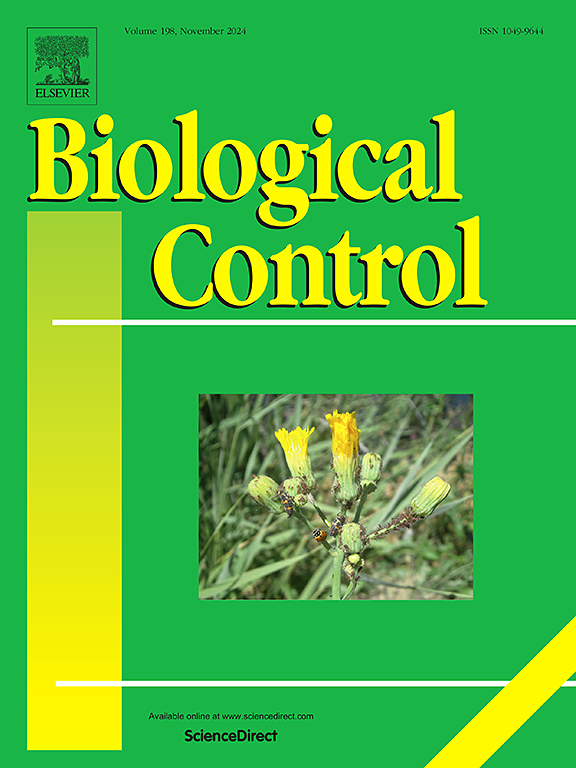气候变化对黄颡鱼及其天敌分布和生态位重叠的影响及其生物防治意义
IF 3.4
2区 农林科学
Q2 BIOTECHNOLOGY & APPLIED MICROBIOLOGY
引用次数: 0
摘要
气候变化深刻影响着物种的地理分布和生态适应性,对害虫及其天敌的空间分布格局提出了新的挑战。为了评估气候变化对生物防治效果的潜在影响,本研究采用集合模型和生态位超体积分析方法,预测了在当前和未来气候条件下,黄家香及其天敌四川硬皮菌(Picus canus)和四川硬皮菌(Sclerodermus sichuanensis)的适宜生境,并分析了天敌与黄家香的生态位重叠情况。结果表明,在当前气候条件下,中国东部、中部和南部地区是我国天敌适宜生境与黄毛蠓适宜生境高度重合的重点地区。在未来,气候变化将扩大天敌的适宜栖息地,并导致三种物种的分布中心向高纬度地区转移。此外,这两种天敌的生态位与布氏假单胞菌的高度重叠表明它们在生态适应方面具有控制害虫种群的潜力。研究结果为评估气候变化背景下害虫及其天敌的空间动态提供了科学依据,为优化生物防治策略、制定精准虫害治理措施、维护生态系统稳定提供了理论支持。本文章由计算机程序翻译,如有差异,请以英文原文为准。

Climate change impacts on the distribution and ecological niche overlap of Aromia bungii and its natural enemies: implications for biological control
Climate change is profoundly affecting the geographical distribution and ecological adaptability of species, posing new challenges to the spatial distribution patterns of pests and their natural enemies. To assess the potential impact of climate change on the effectiveness of biological control, this study applied ensemble models and ecological niche hypervolume analysis to predict the suitable habitats of Aromia bungii and its natural enemies, Picus canus and Sclerodermus sichuanensis, under current and future climate conditions, while also analyzing the niche overlap between the natural enemies and the pest. The results indicate that under the current climate, the eastern, central, and southern regions of China are key areas where the suitable habitats of natural enemies highly overlap with that of A. bungii. In the future, climate change will expand the suitable habitats of natural enemies and cause the distribution centers of the three species to shift toward higher latitudes. Additionally, the strong overlap of ecological niches of the two natural enemies with A. bungii suggests that they have the potential to control pest populations in terms of ecological adaptations. The findings provide scientific evidence for assessing the spatial dynamics of pests and their natural enemies under the context of climate change, and offer theoretical support for optimizing biological control strategies, formulating precise pest management measures, and maintaining ecosystem stability.
求助全文
通过发布文献求助,成功后即可免费获取论文全文。
去求助
来源期刊

Biological Control
生物-昆虫学
CiteScore
7.40
自引率
7.10%
发文量
220
审稿时长
63 days
期刊介绍:
Biological control is an environmentally sound and effective means of reducing or mitigating pests and pest effects through the use of natural enemies. The aim of Biological Control is to promote this science and technology through publication of original research articles and reviews of research and theory. The journal devotes a section to reports on biotechnologies dealing with the elucidation and use of genes or gene products for the enhancement of biological control agents.
The journal encompasses biological control of viral, microbial, nematode, insect, mite, weed, and vertebrate pests in agriculture, aquatic, forest, natural resource, stored product, and urban environments. Biological control of arthropod pests of human and domestic animals is also included. Ecological, molecular, and biotechnological approaches to the understanding of biological control are welcome.
 求助内容:
求助内容: 应助结果提醒方式:
应助结果提醒方式:


